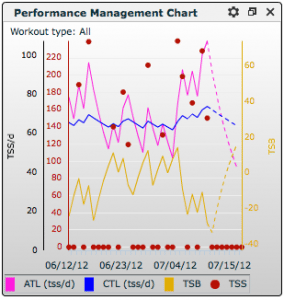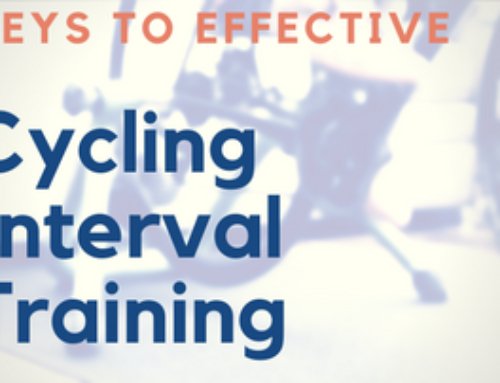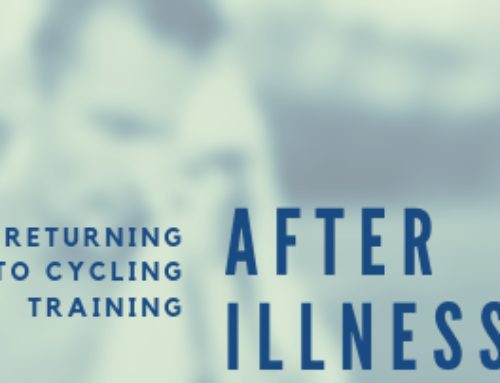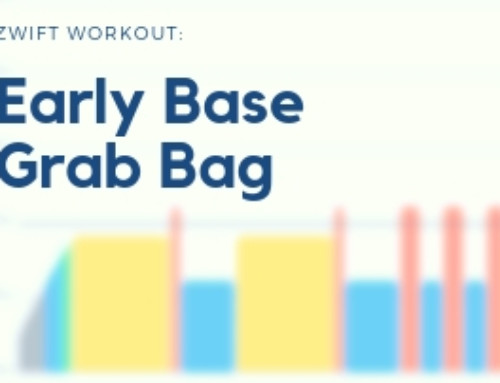What is a cycling performance management chart and what can it do for you? Is it just a way to graph your fitness? Does it tell you if you're ready to race? Will it keep you from overtraining?
The performance management chart (PMC) is one of the lifelines between an athlete and their structured training work load. Many of my listeners, customers and athletes have asked me what all those squiggly little lines and numbers mean? Sure, there's a basic concept of “keep on climbing” the fitness mountain, but it's a far more nuanced tool than just that, revealing information about your fitness, form and where you may potentially be overdoing it.
After the jump we'll discuss the basics of the PMC, how you manage your training and your fitness using a PMC, how to read all those little lines and how you can use the PMC as a tool to maximize your performance. I'll also talk about what the PMC CAN'T do, which is perhaps the most important thing to know.
Check the show notes after the jump for more:
Podcast: Play in new window | Download (Duration: 39:51 — 73.0MB)
Show Notes:
ATL – Acute Training Load, abbreviated ATL is a representation of the effect of your training from the past 14 days. It refers to how fatigued your body is in the short term. In many cases, coaches will use ATL and “fatigue” interchangeably when discussing a PMC with their athletes. Measured in TSS/day, this is the graph that you'll refer to when you're looking at how much you've been piling onto your body in the past few weeks in terms of training stress.
Quite simply, the higher your ATL, the more work your body has been subjected to and the more fatigue is present. Consistently elevated ATL levels can lead to over-training and in some cases, burnout, especially when you consider that your PMC doesn't take into account all your day-to-day stresses outside of cycling. The more stress you have in your day-to-day life, the more it adds to your ATL.
CTL – Chronic Training Load (CTL) is what happens when your ATL matures (sort of.) CTL measures your gains of an average of 42 days, and would generally be considered your “fitness” when viewed in context. Keep in mind that CTL is only a mark of general fitness, not of event specific fitness or specific ability. There are other tools for measuring specific fitness.
Again measured in TSS/day, you'll refer to this graph to determine improvement over a longer period of time (typically months as opposed to weeks.) What you'll need to be careful of is the rate of CTL rise (which we'll cover later.) Overall, CTL ties in very nicely to FTP, which you can think of in this way: FTP (which we've talked about in the past) is a measure of how hard you can go. CTL is a measure of how LONG you can go AT FTP!
TSB
TSB or Training Stress Balance is simply a measure of the balance between “fitness” and “fatigue”. Practically, TSB is a measure of form: how well you've balanced challenging your body by putting in training stress, causing it to fatigue (ATL) and how your body has recovered and improved its fitness.
Carefully evaluating this metric is how you can determine when your peak form is attained. As I've referenced in the past (Podcast 52, Analyzing Your Cycling Season) when you go back and look at your season successes and failures, one of the things you'll need to review are the TSB numbers immediately preceding your successful events. Take note of those TSBs, as well as the conditions of the day and your body. As you start to plan your training, you can set TSB goals for those event days.
One thing to remember is that TSB is not the ONLY predictor of a high quality performance: a host of other factors go into it. Outside stresses, heat, hydration, sleep, etc etc are all factors that play into your performance. So when you're planning, start with TSB and go from there.
TSS
Training Stress Score is a measure of the amount of physiological stress your body has been put under during workouts. It's an arbitrary number that tells you (based on factors such as your Normalized Power for the workout, the IF of the workout, your FTP and time) how hard you worked during your workout.
For those of you using my Raw Strength Module or any other heavy lifting/gym work you can equate .5 TSS for every minute of actual gym exercise you perform.
IF
Intensity Factor is a measure of the difficulty of a specific workout. It is essentially a description of how close to 100% effort the workout was, calculated by diving your NP over your FTP. It's worth saying that if you're doing very short, high intensity workouts or events (criteriums come to mind) you'll see IFs around 1.05 or higher. Recovery days should be around .75 IF. A good, solid time trial or FTP Test would be right at .99 to 1.01.
 Using the PMC to Peak and Avoid Over Training
Using the PMC to Peak and Avoid Over Training
As mentioned earlier, the hardest thing to figure out will be what TSB level and duration corresponds to “peak” performance. For some athletes, a couple of days at +10 TSB will lead to peak form. For others, it may be 4 days at +10 or a few days at -5. This is where experience (as with everything in cycling) comes into play: look back at your past performances and see what your TSB looks like before a successful race. This will give you a starting point, and you can refine those requirements as you try adding or subtracting TSS in the lead-up to your races as well as evaluating external factors.
To avoid over-training, you can look to your CTL. As a general rule, cyclists with a CTL under 40 can get away with a max of 7-9 points of CTL growth per week. As you train hard and CTL rises towards 60 or so, I like to keep growth around 5-7 points per week. Around 80 CTL and we're in the 3-5 points per week range. Over 90 CTL and I prefer to keep my athletes gaining CTL around 1 point per week.
Of course, as CTL climbs, I tend to prefer to switch the type of training from general fitness gain to event specific high intensity work, which both slows CTL gain (you simply can't do as much of it, and you need longer to recover from it) and increases event specific fitness (which doesn't always show on the CTL graph.)
If you continue on the obsessive track of raising CTL indiscriminately, there's a real chance it will burn you out quickly. You'll pile on so much fatigue that it's only a matter of time before your body gives out. While it's very true that you can get away with a couple of weeks of extremely hard training or racing, that's about all you can get away with. You'll NEED rest after efforts like that, without question. By keeping your CTL gains steadily rising within the parameters above you'll realize increased fitness and peak performance without the over-training downside.
If you enjoyed this episode, please do me a favor and head over to the Tailwind Coaching Podcast on iTunes and rate it 5 stars. A positive review helps the podcast move up the ratings, reach more listeners, and help more people get stronger, faster and fitter. Don't forget to post any questions to the Tailwind Coaching Facebook page, on the Tailwind Coaching forums, contact me via email or leave a comment below. Don't forget to support our sponsors and help to keep this podcast free, help me to get this information to more people and help grow the cycling community.
I encourage you to subscribe to the Tailwind Coaching Newsletter to get my best coaching tips delivered to your inbox, along with a free bonus training plan, updates and exclusive discounts.
If you're looking for a complete training solution, you can pick up your training plans by checking out my modular training plans in my online store. You should be thinking about fall fitness since those late season races and gran fondos will be here before you know it. Get a head start building fitness and thinking about climbing, sprinting or preparing for a century ride. Let me help you out by providing your training path to glory!






